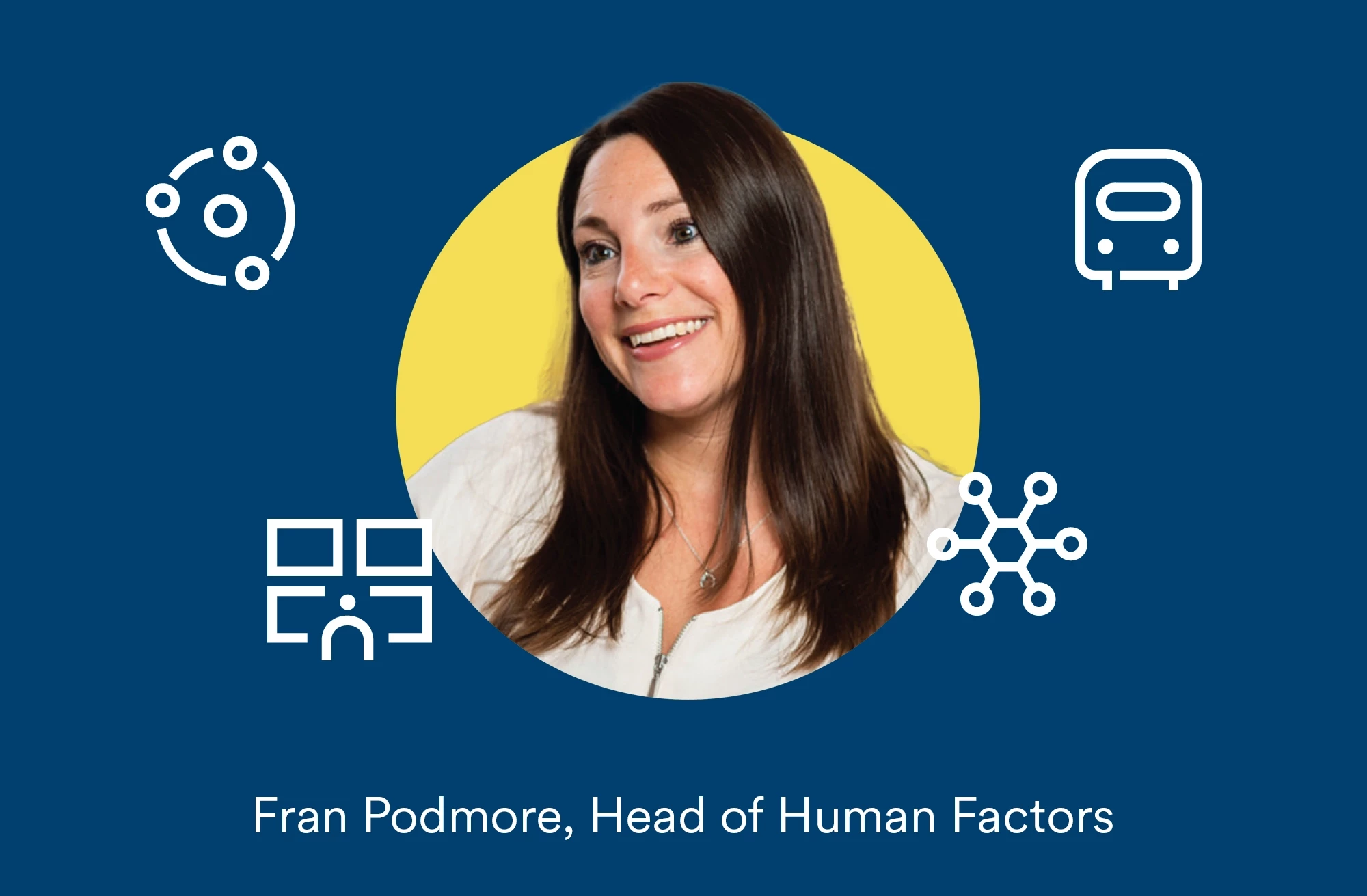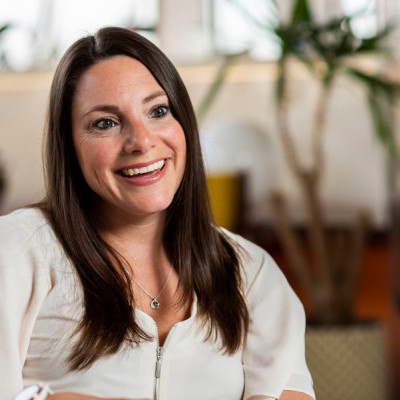Mima Moments, Fran Podmore, Head of Human Factors
We sat down with our Head of Human Factors, Fran Podmore, to discuss how to keep people at the heart of the design process, explore the latest innovation trends, and uncover one everyday design flaw she wishes more people understood through the lens of human factors.

What inspired you to pursue a career in design?
I didn't pursue a career in design originally, you could say it found me! I had wanted to study Psychology, but I didn't get onto the course I wanted, where I wanted. At that time I was set on studying at Loughborough University. So I found a course that sounded interesting - Ergonomics. It had part Psychology, part Anatomy and Physiology, and this new thing then called Ergonomics. I thought, this sounds interesting. I got into Loughborough and I really enjoyed the course, so I never left. When I graduated, CCD Design & Ergonomics (Mima’s former name) was my first job!
How do you keep people at the centre of the work you do?
As a human factors consultant, people being at the centre is the key to our work. Firstly, I always want to go to their environment and understand how they work, the challenges and limitations they face, and how they wish to work in the future. Without seeing and understanding the users in action - what they do and who they do it with, it is very hard to achieve an optimum design result.
It is also key not to assume you have a design right, you need to test and iterate, test again. Once in service, carrying out reviews are a vital part of ensuring that people remain at the centre of the process. We like to go back and make sure that it is actually working for the intended users by making any further recommendations.
Without seeing and understanding the users in action - what they do and who they do it with, it is very hard to achieve an optimum design result.
What is one everyday design flaw you wish people understood better through the lens of human factors?
It’s a really broad one - assuming that everyone can use everything in the same way.
Human factors is focused on designing for the broad spectrum of people in society such as the 5th percentile female, through to the 95th percentile male of a region. We work across the world, and different nationalities have different characteristics. Assuming what we design e.g. a control room in the UK is the same and useful to those in Japan, is not true. We always have to be changing our mindset to the right demographics. Designing a product that suits you and some of your colleagues isn’t the right approach. We need to consider and design to the needs of users within their particular context. I find this really interesting.
What design or innovation trends are you most excited about?
AI is a big question these days - it’s being introduced into lots of industries including the rail industry where many of my projects sit. We need to understand its impact upon issues such as user trust, situational awareness, workload and safety. We have done a lot of work previously on automation systems and how those affect a users ability to carry out their role. For example, maintaining awareness whilst monitoring a system - what feedback is the user getting to be able to understand what they see happening on a system? AI is adding a similar quandary, offering useful assistance, but ultimately, the human operators are likely to need to retain authority and responsibility for some or all decision making.
Designing a product that suits you and some of your colleagues isn’t the right approach. We need to consider and design to the needs of users within their particular context.
Finally, what does the micro and macro mean to you?
To me, the micro is really understanding the details - zooming in. Working with people to understand what they do, how they do it, what they need, what are the personal characteristics that might affect what they as users need.
And the macro is how do we bring all of that into a complete environment, especially a shared environment where there may be multiple users, like a control room e.g. requiring workstations, supporting equipment, lighting, etc.
Written by:

Francesca Podmore
Head of Human Factors
Fran is an experienced human factors engineer with a portfolio of projects across rail, aviation, energy and government sectors. She has led a number of major projects including our work on the command centre for the ITER fusion reactor. She brings experience across a range of human factors methods including UX design, risk assessment and user trials organisation.